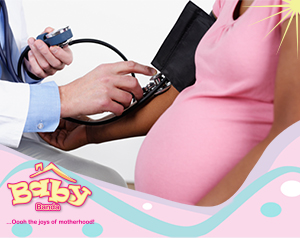Complications in Pregnancy. What are some common complications of pregnancy? These complications will involve the mothers and the child’s health. These complications make pregnancy very risky.
PLACENTA PREVIA: Complications in Pregnancy
The placenta is an organ that grows in the womb alongside the fetus and provides the baby with nutrients and oxygen via the umbilical cord. Usually, the placenta attaches itself high in the uterus, out of the way of the baby but sometimes it can attach itself abnormally. When this happens, placenta previa is likely to happen. Placenta previa is when the placenta stubbornly refuses to move itself up from the bottom of the womb, sometimes covering the cervix, which then blocks the passage of the baby during labour.
Causes of Placenta Previa
Though the cause of placenta previa is unknown, the following are some risk factors that can contribute to the condition:
• Advanced maternal age
• Previous Caesarean section
• Smoking or drug use (e.g. cocaine)
• Previous placenta previa
• Uterine scarring (e.g. endometriosis)
• Induced or spontaneous abortion
Signs & Symptoms
The most significantly recognized symptoms of placenta previa are:
• painless, bright red vaginal bleeding or haemorrhage during late pregnancy.
• Heavy bleeding when labour begins
Treatment
• Perform a transabdominal ultrasound to diagnose the Previa.
• Medical management of a placenta previa is largely determined by gestational age, foetal status, amount of bleeding, and type of Previa. You may deliver vaginally if you are near term, the cervix is ripe, the foetal heart tracing is normal, and there is minimal bleeding.
• However, if heart tracings indicate foetal compromise, significant bleeding, or haemorrhage, or a complete Previa is present, a cesarean section is usually necessary.
• If diagnosed earlier, you will need to maintain bed rest to prevent unnecessary pressure on the internal cervical area where the placenta is implanted.
• maintain pelvic rest by abstaining from sexual intercourse or using tampons or douches.
• It is important to prohibit vaginal examinations.
PLACENTA ABRUPTION: Complications in Pregnancy
Placental abruption is the premature separation of the normally implanted placenta from the uterine wall before labour and delivery of the newborn. Bleeding occurs between the uterine wall and the placenta. The abruption is classified according to the degree of placental separation and subsequent haemorrhage. An abruption can be partial or complete, with apparent or concealed haemorrhage.
1. Partial Abruption – a section of the placenta separates from the uterine wall but the margins of the placenta remain intact.
2. Complete abruption occurs when the entire placenta detaches from the uterine wall.
3. Apparent haemorrhage refers to bleeding that is evident, while a concealed haemorrhage denotes bleeding that is obscured or hidden
Risk Factors
Aside from abruptions occurring as a result of trauma, the cause of it is largely unknown. However, there are several factors that place patients at risk for abruption.
• Drug use (e.g. cocaine)
• Alcohol abuse
• Cigarette smoking
• Hypertension
• Diabetes mellitus
• Advanced maternal age
• Multiple pregnancies
• Abdominal trauma (e.g. accident, violence)
Signs and symptoms
The classic signs and symptoms of abruption placenta include:
• vaginal bleeding, which may be dark red due to old blood from a concealed abruption,
• uterine tenderness,
• board-like abdomen,
• aching or dull pain in the abdomen or lower back.
Maternal and Foetal implications: Complications in Pregnancy
A placental abruption is a life-threatening event for both the mum and the baby. There is a risk of going into shock because of the bleeding and the mother may suffer from postpartum haemorrhage or bleeding after delivery due to poor contracting of the uterus following an abruption. Since the placenta is the source of oxygenation for the unborn foetus, premature separation of the placenta from the uterine wall can place the foetus at great risk for hypoxia and death.
Treatment
Placenta Abruption is usually diagnosed by abdominal ultrasound in addition to the presenting signs and symptoms. Treatment is based on the degree of placental separation and subsequent bleeding as well as the status of the patient and foetus. In the presence of severe abruption and bleeding, an emergency cesarean section is performed, unless delivery is imminent.













